I admit it — if fava beans weren’t so good for the soil, I likely wouldn’t grow them at all, edible or not. Hidden inside those fat long pods are handfuls of delicious beans, but they make you work for it. Really work for it.
Shelling the beans is a labor-intensive process, one that should be done on a (not so) lazy Sunday around the kitchen table or on the back porch while you watch your kids play. You might even enlist your kids to help, or bribe a friend to do it with you. It’s a lot of time to spend on a bean.
But despite the seemingly neverending shucking involved, fava beans have a buttery goodness that you don’t find in other beans, making the toilsome undertaking a true treasure hunt.
Fava beans (Vicia faba) are also known as faba beans, broad beans, horse beans, field beans, and Windsor beans. These Old World beans hail from Europe and are among the most ancient crops to be cultivated, dating back to at least 6000 BC.
The fava bean is a prolific, low-maintenance variety grown in cool weather. In my zone 10b climate, I sow seeds in the fall and harvest beans through winter and spring. (They can also be started in spring and harvested through summer.) They are unaffected by cold conditions and clay soils, but are susceptible to rust, a fungal disease of the leaves.
Fava beans grow as rigid, upright plants from 2 to 5 feet tall and often require staking as they mature.

The young leaves are pale green, tender and delicious. Yes, you can eat them! (And unlike the beans, which are a chore to prep, fava leaves are ready to eat right off the plant. If you want to grow favas for their nitrogen-fixing properties but fend off the guilt of not harvesting the beans, just eat the leaves!)
Trim the tender tops off your plants and make a salad with other seasonal favorites, like spinach and citrus. Fava leaves have a sweet and nutty flavor, just like the beans.
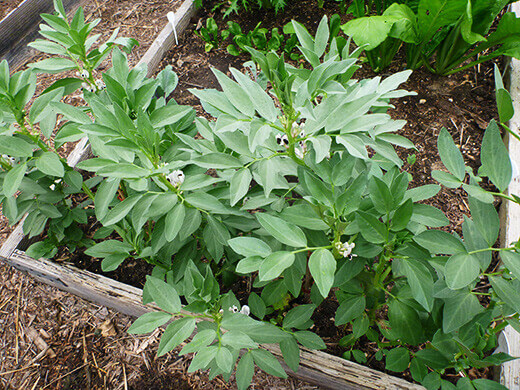
The beautiful flowers bloom in clusters and are reminiscent of orchids.
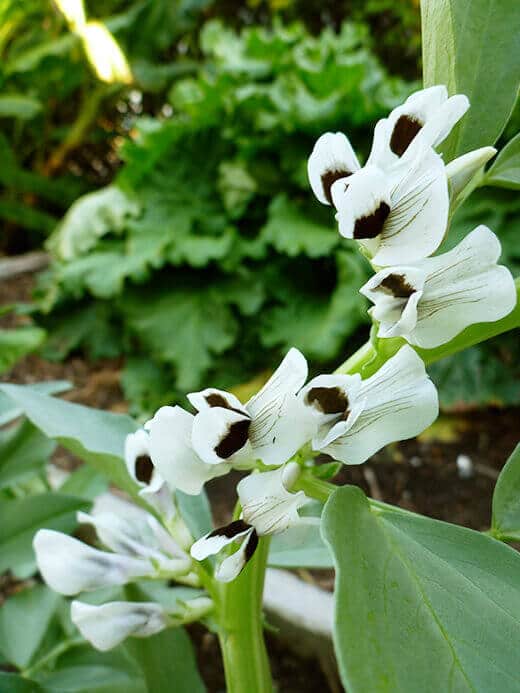
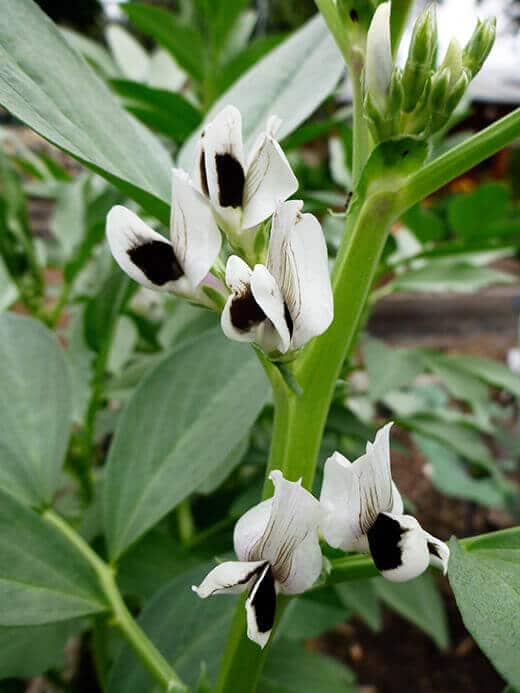
The fruit from these flowers grow as long, dense, bright green pods. Picked early, while the pods are still skinny, fava beans can be eaten whole like any other bush bean.

But if you wait until the pods reach 6 to 8 inches long, you’ll be treated to the delectable beans favas are known for.

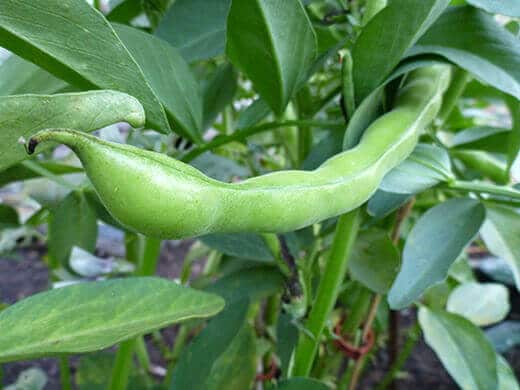
Harvest the beans when the pods are large and bright, but not over-bulging.
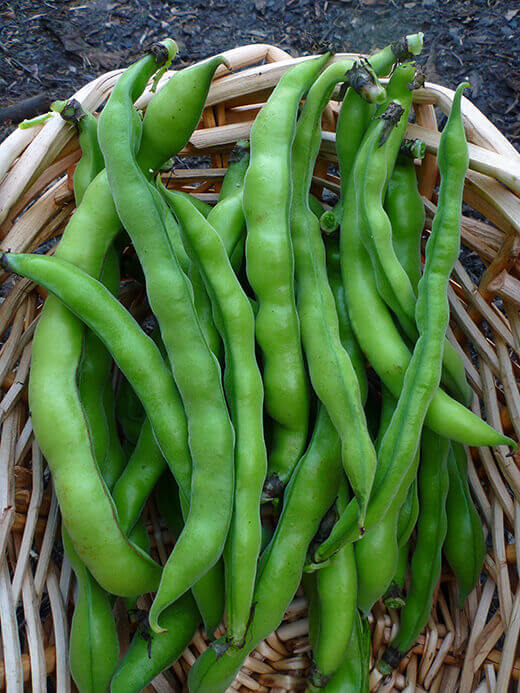
To start shucking the bean, start at the pointy end of the pod and snap back the tip with your finger.
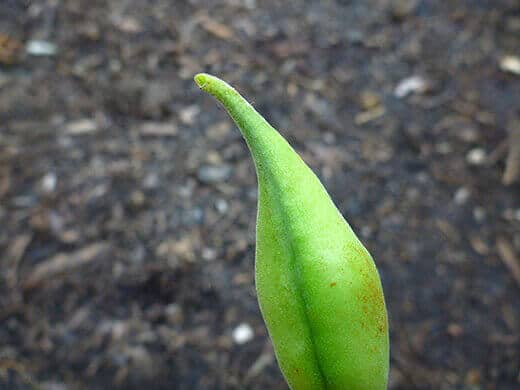

Peel back the string until the pod is completely split along its seam.
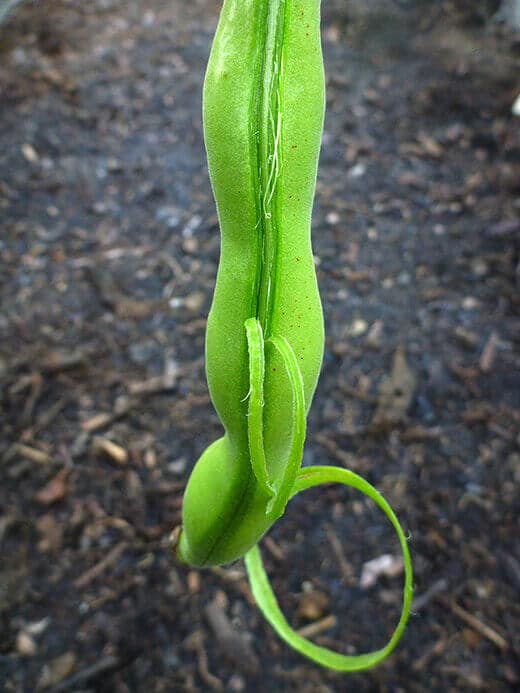
Once the pod is split open, you’ll find a row of beans inside, but these are not the actual beans you’ll eat (trust me, I’ve tried).

Each bean is covered with a thick, waxy shell that you have to shuck to get to the goods.

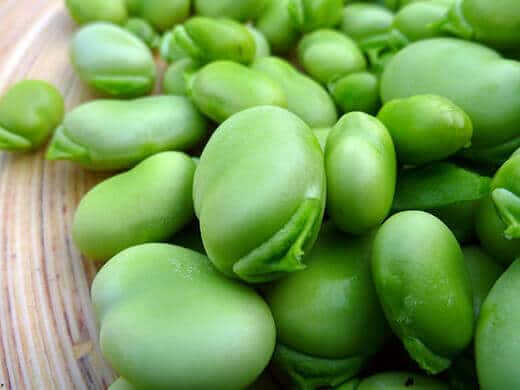
The easiest way to do this is to parboil the beans for no more than a minute.
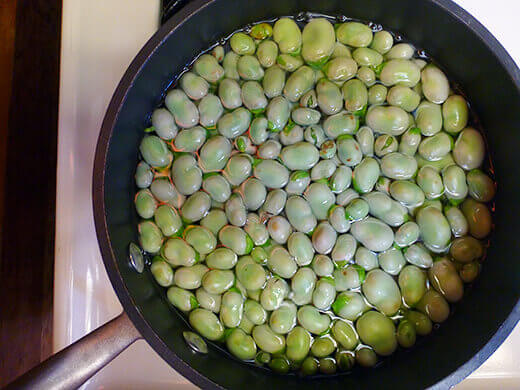
Strain them, then dunk the beans into an ice water bath to stop them from cooking.
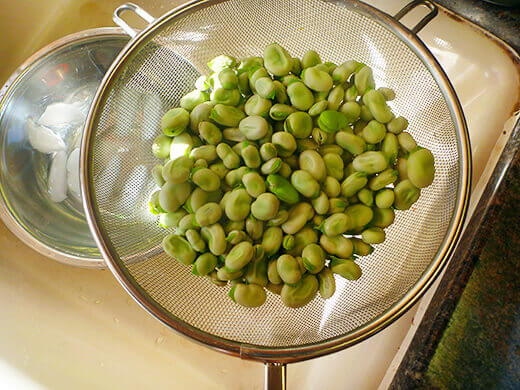
You may notice that some of the outer shells (now a dull grayish-green) have started to split open, revealing vibrant green beans inside.

Now that the shells are soft and pliable, it’s quite simple to squeeze the sides and pop out the bean. You can also slice the top of the shell with your fingernail and squeeze the bean out that way.
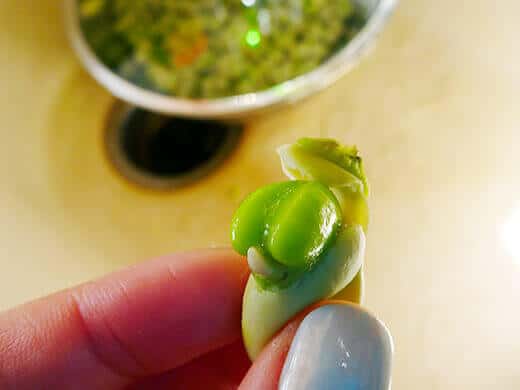
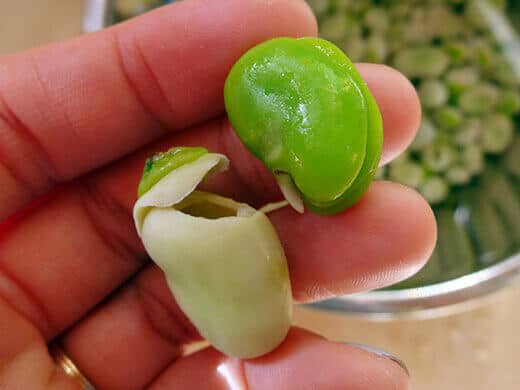
In general, a pound of pods yields around a quarter-cup to a third-cup of shelled fava beans. At that rate, you can see why this process calls for a lot of patience and perhaps a glass of wine while you work!

My favorite way to prepare fava beans is in a risotto with little more than onion and butter. The simple recipe really lets the smooth and rich flavors of the favas shine.
In fact, you can even make an all-fava meal, starting with a fava leaf salad (add sliced oranges, crumbled feta, chopped walnuts, and a drizzle of vinaigrette), a fava leaf pesto for your linguine, and a side dish of fava beans sauteed with garlic and shrimp. I haven’t yet found a way to incorporate fava beans into dessert (fava bean ice cream, anyone?) but I’ll report back if I do!















